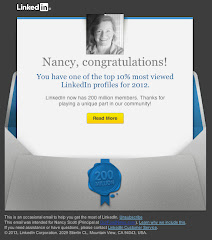The phrase “Henceforward Shall Be Free” is taken from the Emancipation Proclamation. Art director Antonio Alcalá of Alexandria, VA, worked with graphic designer Gail Anderson of New York City to produce the stamp. To evoke the look of posters from the Civil War era, they employed Hatch Show Print of Nashville, TN, one of the oldest working letterpress print shops in America.
|
The Postal Service's Forever Stamp collection is full of "art" in every delicious sense of the word. Learn more about the design of the Forever collection at Beyond the Perf, which features a video interview with the five USPS art directors who bring illustrative meaning to “decorative stamp.”
Ethel Kessler talks about the
talents of the five people who work on the stamps. “Each of us has different
passions, different strengths. And we’re relentless, [asking] what can we do at
every level to enrich it.”
Phil Jordan, who created the
USPS Civil War series, says his effort seeks to honor past acts of courage or
accomplishment. Although the public may not understand every stamp, they can
appreciate the beauty. “What evolved was a labor of intense scrutiny… I wanted
to express what people were thinking and what the common person was doing,
particularly the common soldier." Was all the research worth it?
"What we have, we know will stand up to scrutiny,” says Jordan.
Kessler researched her Nobel Prize winners series just
as diligently. She can't cite in depth what scientific achievement each winner
was known for, but she was dedicated to capturing the essence of, perhaps, the
world's most coveted award. “Ethel really did an amazing job says Derry Noyes.
“She was working with murky photographs of scientists and complex formulas. This
could have been a recipe for disaster, but everything went beautifully.”
Antonio Alcala -- who worked on the "Henceforth" stamp released today -- says his favorite series features industrial design
from the 40s, 50s, and 60s. Greg Breeding also loves the Pioneers of American
Industrialism series that he says has inspired so many objects we use today,
including the iPad, telephones, etc.
From Miles Davis/Edith Piaf's moody images ...
to Major League Baseball All-Stars ....
to the Vanishing Species series ..
... the artists who work on postal stamps hit it out of the ballpark.
“We’re telling a story; we’re telling America’s story,” says
Kessler -- and that story is complex in more ways that we can imagine. For
example, the Latin Music Legends series is Kessler's favorite. “I worked with
Raphael Lopez who is himself a musician and a brilliant illustrator. We decided
what we were looking was ‘performance,’ that we could hear the music.”
Likely, only a designer can discern the many possibilities
that comprise a powerful picture. “What is it that grabs you? Is it the title,
the color, the graphics? Is it pretty, is it edgy? Designing stamps is more
work than you think," Noyes concludes. "It’s a real collaborative effort. If the collaboration has worked well, then we have a great stamp.”
Kessel adds, “Our biggest success is when it looks easy.”
Note: USPS also is selling a 16" x 23" poster featuring the same art that is on the "Henceforward" stamp. Using the traditional letterpress printing process that makes each one unique, only 5,000 of these posters will be produced. Each poster also bears a limited-edition number. To add to their collectability, the first 1,000 posters will be autographed by graphic designer Gail Anderson and fulfilled with the lowest numbers first in the order in which orders are placed.
-- scrubbed by MarketingBrillo
|














